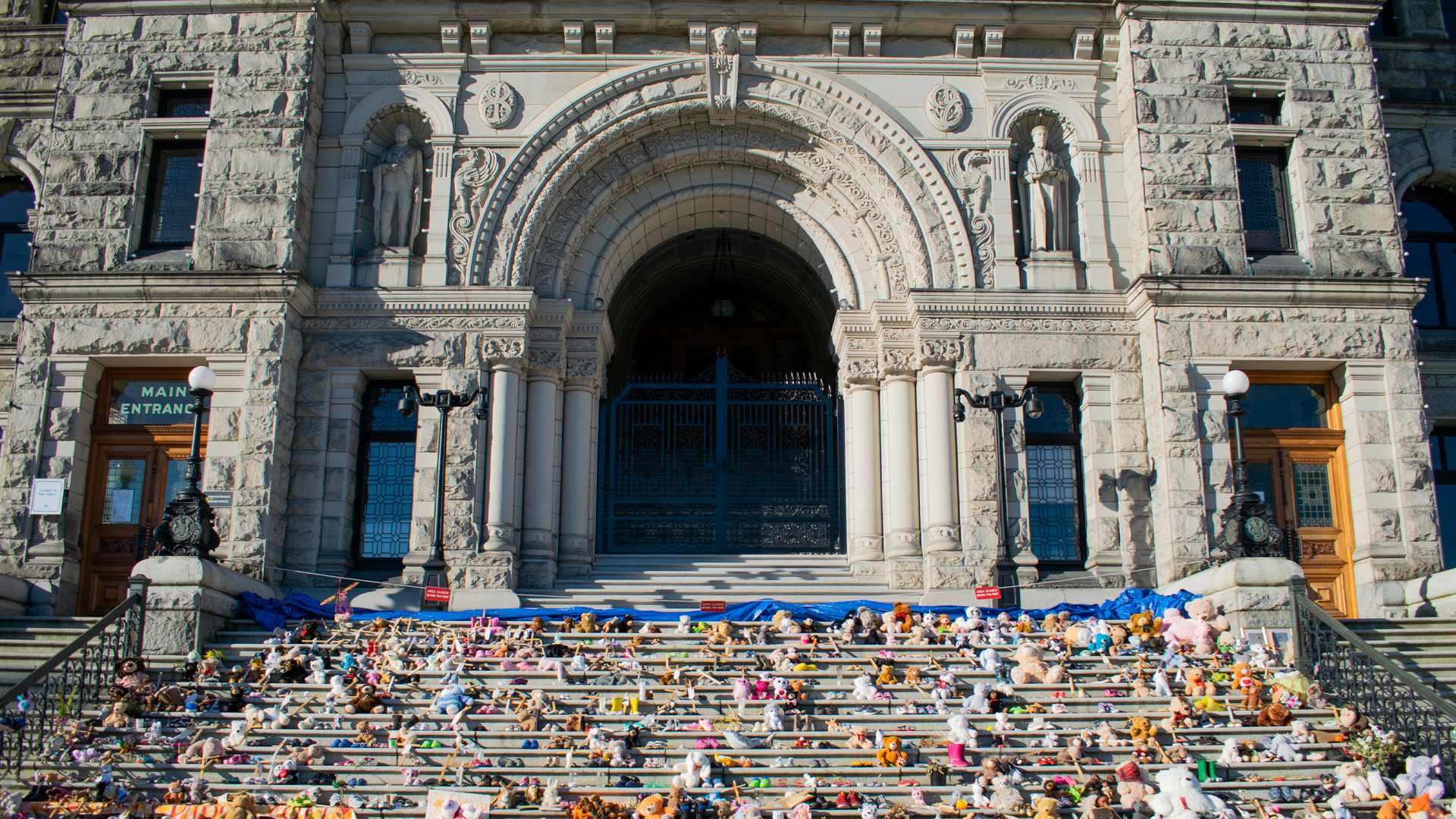
Canadians are heading into a Sept. 20 election on the heels of a summer defined by hard truths and confrontations with our country’s violent colonial past. While some are framing the election as a referendum on Canada’s response to the pandemic, the decision that voters face is also set against a backdrop of growing calls for action on reconciliation. A 2021 Confederation of Tomorrow survey found that 60 per cent of Indigenous people and 42 per cent of non-Indigenous Canadians think governments have not gone far enough to advance reconciliation. Will this shape the debate?
The recent work by the Centre of Excellence on the Canadian Federation at the Institute for Research on Public Policy provides valuable context on COVID-19, the implementation of the United Nations Declaration of the Rights of Indigenous Peoples (UNDRIP) and the role of settlers in the challenges ahead. The pandemic must not overshadow electoral commitments that advance reconciliation.
Discovery of unmarked graves defined the summer
Beginning in May 2021, with the discovery of 215 unmarked graves at the site of a former residential school in Kamloops, B.C., the graves of more than 1,300 other children have since been found, including more than 751 in Marieval, Sask. While these discoveries have been uniformly labelled as shocking by settler society, what is even more shocking is that Indigenous communities have known about and advocated for support to uncover these sites for decades, yet Canadian governments consistently chose to ignore them.
They were specifically highlighted in the 2015 Truth and Reconciliation Commission of Canada report. The scope and scale of these willfully delayed discoveries – when finally made public – fueled waves of protest and grief. Public outrage was met by a mix of platitudes, fragmented financial commitments and political missteps that went on to colour this period of national grief.
Since May, the federal government has distributed $27 million to First Nations to locate, identify and commemorate former residential school grave sites, but it is estimated that the total cost to excavate all former sites could be closer to $1 billion.
Confronting cultural genocide wrought by residential schools has not been without political cost. Manitoba Premier Brian Pallister publicly downplayed Canada’s colonial history, stating: “The people who came here to this country before it was a country, and since, didn’t come here to destroy anything.” These comments led to the resignation of his Indigenous and northern relations minister and was later a contributing factor to his own mid-term resignation announcement. The existence of unmarked graves places a duty on the state to act, because graves contain evidence that is essential to the realization of truth, justice and accountability for the victims and communities. Anything short of full recognition of this history and action to remedy past harms will likely come at a steep political price.
Indigenous communities have been hit hard by COVID
At the same time, most of Canada entered the fourth wave of the COVID pandemic. But Canada is vast and the shape of the fourth wave, like previous waves, will differ greatly across the country. This is especially true for people living on reserve and in the sparsely populated and geographically remote northern territories. For example, while much of Canada was at the tail end of a third wave, Yukon declared a first wave only beginning June 27, 2021
Based on what we know about COVID, younger people, who are vaccinated at a higher rate than other groups, should be less likely to be infected – yet the rate of COVID infections per 100,000 people is 2.4 times greater for First Nations living on reserve than in the general Canadian population. Although infections on reserve are trending downward, the outsized effect of COVID is evidence of insufficient access to health care because of systemic racism that is felt through inadequate access to clean water, inadequate housing and under-resourced communities. This has been especially true in Manitoba, where First Nations make up about 18 per cent of the population but accounted for more than 70 per cent of cases in the third wave.
As the 2020 death in a Quebec hospital of Joyce Echaquan, an Atikamekw woman, highlighted for many, the health-care industry is culturally unsafe and shaped by systemic racism and sexism. While the majority of Indigenous people in Canada live in locations that are not governed by Indigenous governments, according to the 2016 census, 44 per cent of all Indigenous people live in urban areas. Research makes it clear that a “cultural match” between service providers, what they provide, and those receiving services, is critical to effective service provision. Without a concerted effort to match service provision to Indigenous communities – urban and on reserve – it is likely that these communities will continue to have outsized COVID infections compared with non-Indigenous Canadians despite being younger on average.
Meeting international obligations
In its first principle of reconciliation, the Truth and Reconciliation Commission confirmed that UNDRIP is “the framework for reconciliation at all levels and across all sectors of society.” In their 2019 platforms, the Liberals, NDP and Green Party all committed to implement this global human rights standard, but the Conservatives did not. On June 21, Bill C-15: United Nations Declaration on the Rights of Indigenous Peoples received royal assent.
Legislation is a preliminary step toward Canada meeting its obligations under the UN declaration, so the challenging work of implementing it now begins.
The government of B.C. introduced a law to implement the declaration and it may serve as a template for the federal government. A starting point is Michael Hudson’s 2020 IRPP Insight, which details how the federal government can look at how the objectives of B.C.’s Environmental Assessment Act were changed to implement UNDRIP and give Indigenous communities a greater decision-making role.
The way political leaders speak about the shape of UNDRIP implementation and an Indigenous rights agenda will shed light on their fundamental values, and their willingness to achieve meaningful reconciliation. In a recent analysis, Sheryl Lightfoot writes that the Indigenous rights agenda “is both conservative and radical. It is conservative because its core demand is for the recognition of rights recognized, at least in name, by nearly all countries in the world. It is radical because recognizing that these rights have been denied, and that a debt of remedy is owed, challenges the legitimacy of liberal democracies like Canada that are otherwise known for abiding by global human rights and the rule of law.” The extent to which leaders are willing to recognize, and act on, the debt of remedy caused by the dispossession of Indigenous lands must be central to the election debate.
With 70 per cent of Canadians acknowledging that they have a role to play in advancing reconciliation – up from 55 per cent in 2020 – advancing an Indigenous rights agenda is timely, and more likely than ever to be on voters’ minds at the ballot box. While voting behaviour is complex and motivations vary, recent events are likely to affect non-Indigenous voters’ perception of reconciliation. The experience of COVID on reserves demonstrates continued systemic racism in health care and infrastructure.
Political leaders should outline meaningful, actionable paths to reach reconciliation goals. This is a moral and legal imperative, and it’s something that parties downplay at their peril. Should this issue not rise to become a top electoral issue, a new government will not be able to avoid it when in office. The electoral campaign will ultimately end, but the urgency of reconciliation will remain with us.









